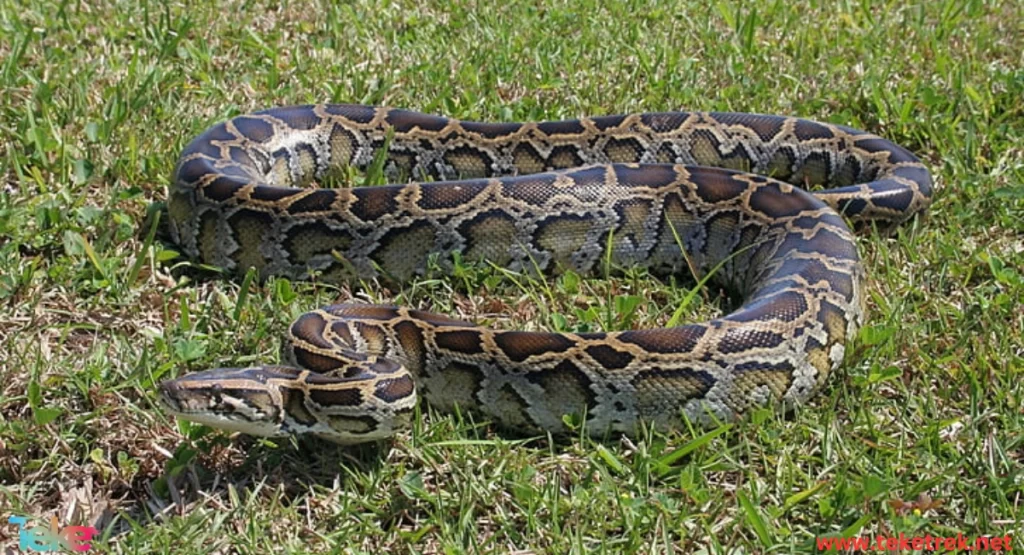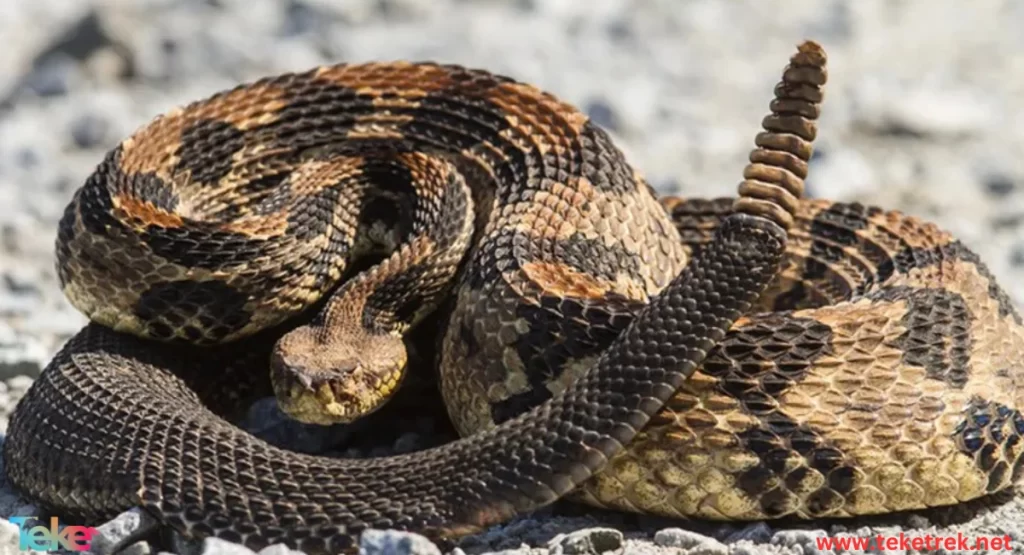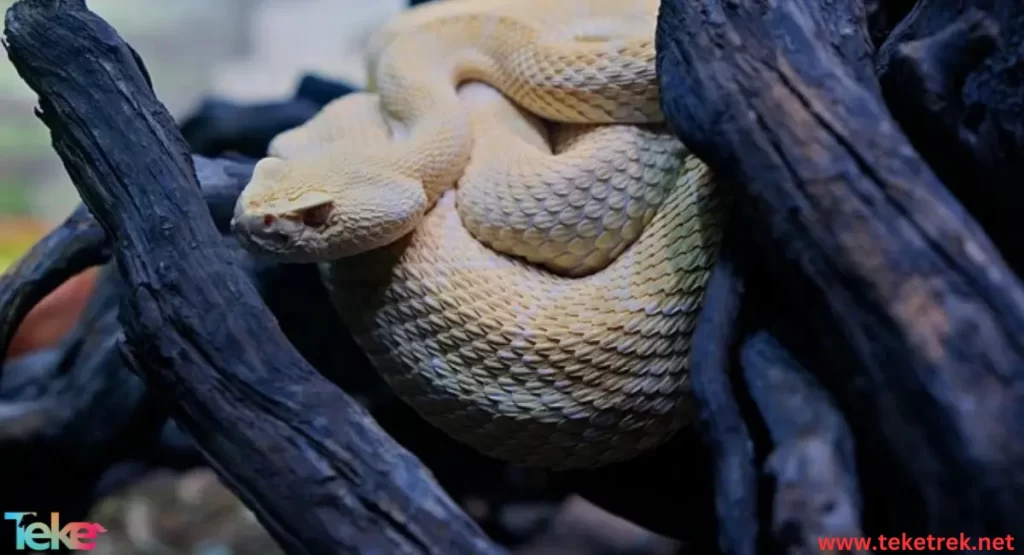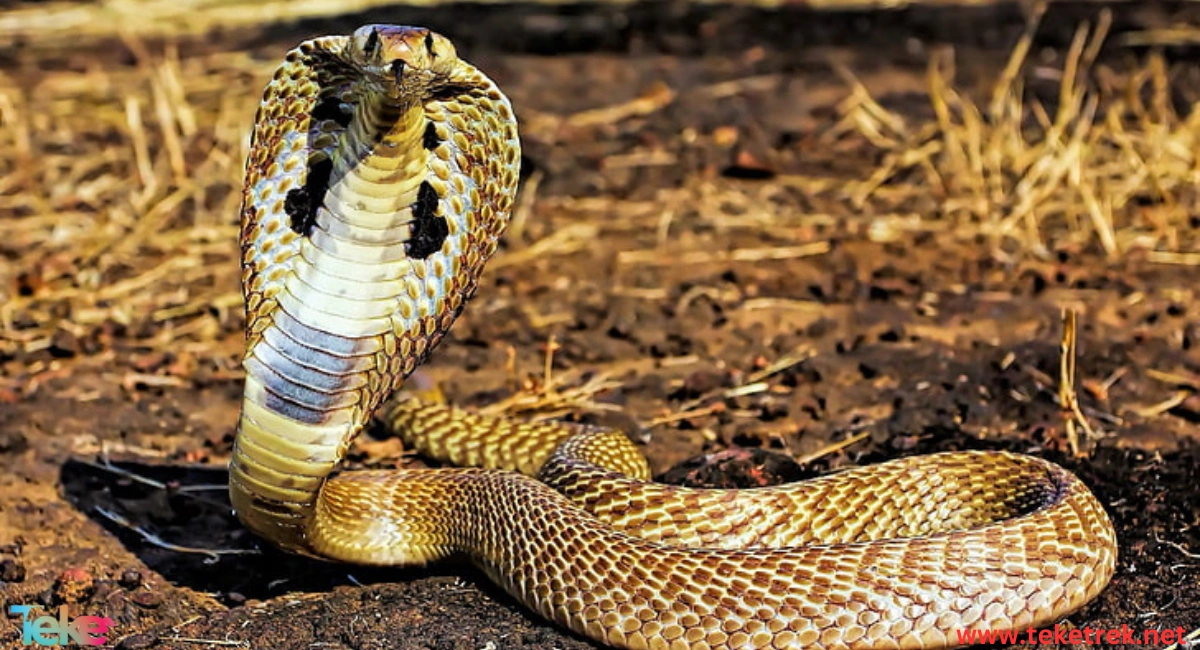Snakes are one of the most curious and terrifying creatures, as they have unique adaptations that have made them one of the most successful predators in nature. They move with amazing flexibility despite the absence of limbs and rely on their senses to hunt and survive. Snakes vary in their types and behavior, some are poisonous and others are non-poisonous, and they play a vital role in ecological balance, and their venom is used in the development of advanced medical treatments. In this article from teketrek, we review the classification of snakes, their physical characteristics, lifestyle, and life cycle, and we will also discuss how to deal with them to avoid their dangers.
Physical characteristics and biological adaptations of snakes
Snakes are one of the most mysterious reptiles, as they have unique abilities that help them survive and adapt in different environments, as:
- Snakes have a unique physical design that gives them the ability to adapt to different environments and move efficiently despite their lack of limbs. The snake’s body is covered with a distinctive scaly skin made up of overlapping scales that protect it and help it move, as it provides ideal friction with the ground, allowing it to slide smoothly across different terrains, whether in deserts, forests, or even in water.
- Snakes have strong senses that compensate for the absence of external ears, as they rely on sharp vision in some species such as the cobra and the black mamba, while nocturnal snakes have an advanced ability to see in the dark.
- They also use their forked tongue to pick up scents from the air, sending molecules to the Jacobson’s organ in the roof of their mouth, which helps them analyze the environment around them with great accuracy. Snakes can also sense ground vibrations through sensory receptors in their skin, which helps them detect prey or nearby predators without the need for vision.
- One of the most prominent adaptations of snakes is their ability to swallow prey that is much larger than their head, due to the structure of their flexible jaw, as they do not have a fused jaw like mammals, but rather their jaw bones are connected by flexible ligaments, which allows them to open their mouths to wide angles. Then it uses its curved teeth to gradually push it into the esophagus, then relies on strong muscle movements to push the prey into the stomach, starting the digestion process that may take days or even weeks, depending on the size of the prey. Which helps it to hunt large animals without having to tear it apart or chew it.

Snake Classification
Snakes differ in their classification, characteristics, and degree of toxicity::
- Scientific Classification of Snakes
- Snakes belong to the animal kingdom and are part of the reptile family. They are scientifically classified as:
- Kingdom: Animalia
- Phylum: Chordata
- Class: Reptiles
- Order: Squamata
- Suborder: Serpentes
- Families:
- Boidae: Includes constrictor snakes such as anacondas.
- Venomous snakes (Elapidae & Viperidae): Includes cobras and rattlesnakes.
- Non-venomous snakes (Colubridae): include grass snakes and rat snakes.
How does animal biodiversity contribute to environmental sustainability?
The difference between venomous and non-venomous snakes
Non-Venomous Snakes
Non-venomous snakes dispatch their victims by either swallowing them alive or constriction until death. While they don’t kill through venomous bites or stings, almost all snakes consume their prey whole, sometimes in astonishingly large quantities.
They lack venomous fangs and rely on strangulation or direct predation.
They have small teeth and do not pose a threat to humans.
Examples: Anaconda, corn snake, king snake.
Venomous Snakes
The term “venomous” applies to living organisms that release toxins when consumed by another organism. In reality, very few snakes are truly venomous. One of the most common venomous snakes, although not harmful, is the garter snake (Thamnophis), found in North America. Its body has the ability to absorb and store toxins from water-dwelling newts, salamanders, and other toxic prey it consumes.
They have fangs that they use to inject venom into their prey.
They secrete a neurotoxin or blood toxin that affects the nervous system or blood circulation.
Examples: Cobra, rattlesnake, black mamba.
Read: Dealing with Venomous Snakes in the Forest
Sea Snakes
Around 70 species of sea snakes inhabit the Indian and Pacific Oceans. While sea snakes are among the most venomous snakes, they pose little threat to humans. They are shy, gentle, and have very short fangs, causing minimal harm.
The most famous types of snakes in the world
Cobra
- Classification: Elapidae family
- It is considered one of the most dangerous venomous snakes, and is famous for its ability to expand its hood when threatened.
- It is spread in Asia and Africa.
- Some of them, such as the king cobra, reach a length of 5.5 meters, which is the longest venomous snake.
- Its venom affects the nervous system and leads to rapid paralysis.
Anaconda
- Classification: Boidae
- It is known as the largest and heaviest snake in the world, as it may weigh up to 250 kg and reach a length of 9 meters.
- It lives in swamps and rivers in South America, especially the Amazon forests.
- It is not poisonous, but it uses strangulation to kill its prey, such as crocodiles and antelopes.
Rattlesnake
- Classification: Viperidae
- It lives in North America, and is characterized by its tail that vibrates to make a warning sound.
- It has a blood toxin that causes blood clotting and tissue collapse.
- Some species, such as the western diamondback, are considered among the most dangerous snakes in the United States.
Black Mamba
- Classification: Elapidae
- It is the fastest snake in the world, reaching speeds of 20 km/h.
- It lives in Africa and is known for its aggression and ability to attack humans.
- Its bite is deadly, as it secretes a deadly neurotoxin that can kill a human within 30 minutes if left untreated.
Everything you need to know about whale sharks: food, size, intelligence, and reproduction.
Life cycle and reproduction in snakes
Snakes have diverse reproductive patterns that adapt to their different environments, as they can reproduce by laying eggs (ovoviviparous reproduction) as in the case of cobras and some grass snakes, or through direct birth (viviparous reproduction) as in the case of anacondas and rattlesnakes, where the female keeps the eggs inside her body until they hatch and give birth to live young.
- During the mating season, males use physical movements and friendly battles to compete for females, and after mating, some females may store sperm for long periods before using them for fertilization.
- The life cycle of a snake begins at the moment of hatching or birth, where the young emerge completely independent and able to search for food and survive without the need for parental care.
- In the first weeks, young snakes rely on instinctive predation for survival, as they begin to hunt insects and small rodents, and over time they grow and undergo several skin shedding processes, allowing them to grow continuously until they reach adulthood.
- The duration of a snake’s maturity varies according to its species, as some species reach sexual maturity within two years, while larger species such as anacondas and cobras may take 5 years or more.
- The life span of snakes varies greatly between the wild and captive, as they Snakes in the wild typically live between 10 and 20 years due to natural hazards such as predators, diseases and environmental changes. In captivity, some species can live more than 30 years thanks to good medical care and nutrition.

Snake behavior and lifestyle
Snakes have a diverse behavior and lifestyle depending on their species and environment, as:
- Some snakes are diurnal and active during the morning hours, such as some desert species that need the sun’s heat, while other species prefer nocturnal activity, especially in hot regions, where they go out to hunt after sunset when temperatures become more moderate.
- Despite not having legs, they rely on their strong body muscles to move, as they use their abdominal scales to hold on to the ground and push forward in undulating movements, or by sliding on smooth surfaces.
- Some snakes, such as the sand viper, have a lateral movement style known as sidewinding, which allows them to move efficiently across sand dunes.
Snake Lifestyles
- Most snakes spend a significant amount of time at rest. Their primary activities involve either thermoregulation or locating live prey, often through passive waiting rather than active searching. Thermoregulation challenges vary based on latitude and altitude.
- Behavior and reactions of snakes differ between temperate North America and those living in lowland tropical regions of the Americas. Similarly, snakes in higher elevations of the Andes in Ecuador exhibit distinct behaviors.
- Regardless of their habitat, snakes face pressures from both living and non-living environmental factors. The degree of challenge varies dramatically based on the region they inhabit. For instance, tropical and humid regions in Africa present constant temperatures close to the optimal level throughout the year, abundant rainfall, and surrounding ecosystems. These environmental challenges are primarily biological, such as competition for food within their own species.
- Other snake species or vertebrates face challenges related to environmental ownership and continuous pressure from predatory animals that view them as delectable prey.
Feeding style of snakes
In terms of hunting and feeding methods, snakes are divided into two main types:
- Constricting snakes such as anacondas and boas: They rely on wrapping around the prey and squeezing it tightly until it stops breathing, then swallowing it whole, as they have flexible jaws that allow them to extend their jaws around prey larger than their head.
- Venomous snakes such as cobras, black mambas, and rattlesnakes: They use specialized fangs to inject venom into their prey. Some venoms paralyze the nervous system (as cobras do), while others cause internal bleeding and tissue damage (such as rattlesnakes). After the venom weakens the prey, the snake follows it through its strong sense of smell before swallowing it whole.
Read: raising snakes at home
Benefits of snakes in the ecosystem
Snakes play an important role in maintaining the ecological balance and have great medical importance, as:
- They are among the most prominent natural predators that help control the numbers of rodents and insects. Which may cause significant damage to agricultural crops and transmit diseases to humans, without the need to use pesticides or chemical toxins, which preserves the ecosystem and reduces environmental pollution.
- Their venom has also become a primary source in medical research to develop effective treatments for many diseases. The unique compounds found in the venom of some snakes are used in the production of drugs to treat blood clots, as they work to prevent clotting and improve blood flow, which helps in treating heart and stroke patients. Their venom is also used to produce powerful painkillers that are superior to some traditional painkillers such as morphine, but without causing addiction or serious side effects.
Snake Habits
- Snakes shed their skin approximately once a month through a process called ecdysis. This allows room for growth and helps them rid themselves of parasites.
- “They rub themselves against a tree branch or any other object, then they slide their skin off from their headfirst, leaving it discarded from the inside out.
- Most snakes lay eggs, but some, like sea snakes, give birth to live young. A few snakes species care for their eggs, apart from the ones that incubate their eggs.
- In addition, you can be seen Snakes in zoo.
How do snakes catch prey?
Snakes have forked tongues, which they move in various directions to smell their surroundings, allowing them to know when danger or food is nearby.
Snakes have several other ways to detect their next meal:
- Through the openings or pits located in front of their eyes. They sense the heat emitted by warm-blooded prey.
- They also pick up vibrations from bones in their lower jaw caused by rodents and other fleeing animals.
- When a snake captures its prey, it can eat animals up to three times the width of its head because its lower jaw can separate from the upper jaw.
- Once the prey enters the snake’s mouth, it is secured in place by teeth pointing inward, effectively trapping the prey.
Most snakes are harmless in most circumstances, but people often fear or dislike them. So, what’s the story between snakes and humans?
Snakes and Humans
- Snakes can control the amount of venom they inject and may bite forcefully to obtain food or defensively for protection. They have a limited supply of venom available at any given time and don’t want to waste it on non-prey items. As a result, approximately 40% of snakebites experienced by humans are of a defensive and “dry” nature (without venom).
- Statistics also indicate that the vast majority of snakebites occur when attempting to handle captive snakes or interacting with wild snakes, or when trying to kill them. In both cases, the snake is only defending itself.
- For example, rattlesnakes are venomous, and the larger ones can be extremely dangerous due to the amount of venom they can inject. However, most of them are shy and reclusive. None of them attack a person without provocation. When someone approaches them or tries to harass them, they coil up and emit warning sounds, striking only as a last resort.”
- As most snake attacks depend on someone encroaching upon the snake’s territory, the snake often feels cornered or provoked during its breeding season. However, even in such cases, there are only two snake species that have a reputation as serious aggressors: the **Black Mamba (Dendroaspis polylepis) in Africa and the King Cobra (Ophiophagus hannah) in Southeast Asia.
- In summary, snakes are often misunderstood, and their reputation suffers due to ignorance about their true nature and role in the natural world. While all snakes are predators, the venomous ones have given the entire group an inaccurate reputation. In reality, only a small percentage of snakes (less than 300 species) are venomous, and only half of those are capable of delivering a lethal bite.
Read: Snake Shedding
Human Deaths and Snakes
- Worldwide, snakebite-related deaths are estimated to be around 80,000 to 140,000 people annually. The majority of these fatalities occur in Southeast Asia due to inadequate medical treatment, poor victim nutrition, and the prevalence of venomous species. Despite approximately 8,000 snakebites by venomous snakes annually in the United States, the average annual death toll is less than 10 or thereabouts, primarily due to bee stings. Interestingly, in Mexico, deaths from bee stings outnumber snakebite fatalities by a factor of.
- Unfortunately, snakes continue to be widely misunderstood by many people.

10 interesting facts about snakes
- Snakes are limbless reptiles with elongated bodies and tails, classified under the order Squamata. They lack movable eyelids, instead having a thin membrane attached to each eye for protection, known as “brille.” They also lack external ear openings.
- Regarding their internal body structure, snakes do not have a urinary bladder. They have elongated visceral organs, with the left organ being reduced compared to the right one. The left lung is significantly reduced or even completely absent, and snakes have an increased number of vertebrae.
- They have developed two types of vertebrate innovations: a tracheal lung in the neck area and a venom delivery system to subdue prey.
- All snakes are covered with scales, which serve several purposes: They retain moisture in arid climates and reduce friction as the snake moves. However, some species are scaleless, but they have scales on their bellies.
- They have a very large family: There are 3,789 species of snakes, making them the second-largest group of reptiles after lizards, divided into 30 different families, with about 140 of them inhabiting Australia.
- “Solar-powered”: They rely entirely on external sources of heat or light, meaning their body temperature is variable and regulated by external sources.
- Not all snakes lay eggs: 70% of snakes lay eggs, and some, especially those living in cold climates, give live birth because the eggs would not survive outside.
Conclusion
Snakes are amazing creatures, as they have unique abilities that have helped them adapt to different environments over millions of years, making them one of the most successful predators in nature. Despite the fears of many, they play a vital role in the ecological balance, as they help control the numbers of rodents and insects, and their venom has become an essential element in the development of advanced medical treatments. Therefore, it is necessary to treat snakes with caution and respect, while avoiding killing them without reason, especially endangered species, to ensure the preservation of biodiversity and the continuation of their role in nature.





